The AmpereOne Socket
After we pulled off the 1U heatsink and wiped off the thermal paste, we could see this. If you look around the edges under the heat spreader, you can see the PCIe and memory I/O dies. We did not pull the heat spreader off since we needed the system to work and I did not want to have to tell the Ampere folks we broke the CPU sample to take a look at what is underneath.
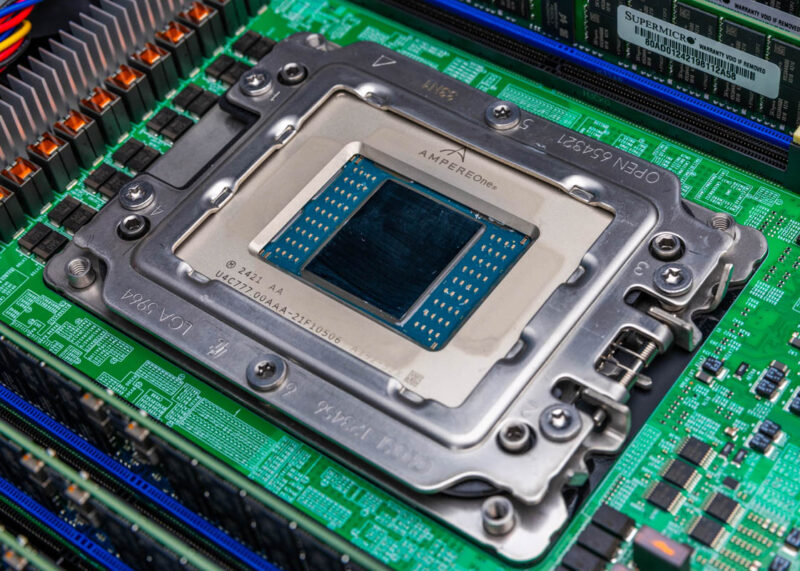
Here is another angle where we can see the LGA5964 socket. The socket is secured via six T20 screws.
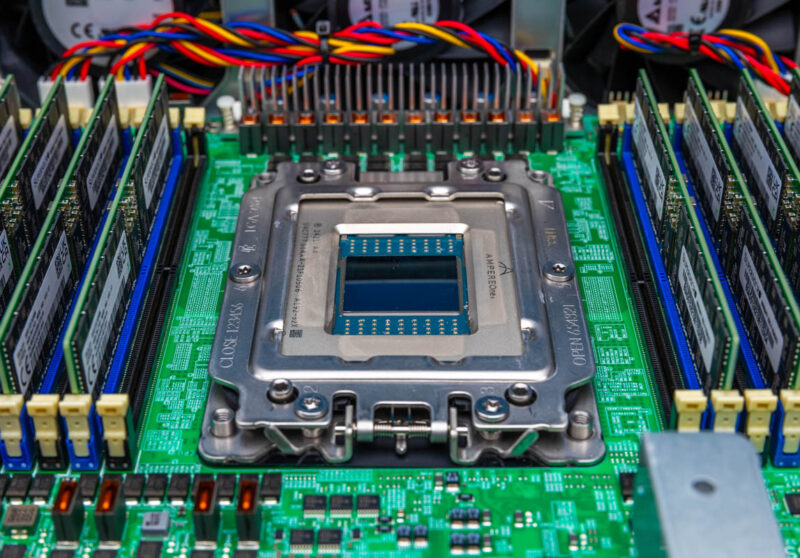
Once those are released, we can see the purpose of the carrier. The black carrier uses four guide pins to orient the chip in the socket. Although the chip is huge, it was not hard to install save for the slightly scary thermal paste and heatsink installation. The socket is a huge upgrade from installing the Altra Max which used neither a carrier like an AMD CPU (or old HP/ HPE Intel Xeons) nor a cooler-based carrier solution like modern Intel Xeons. This felt more AMD EPYC-like, but notably different.
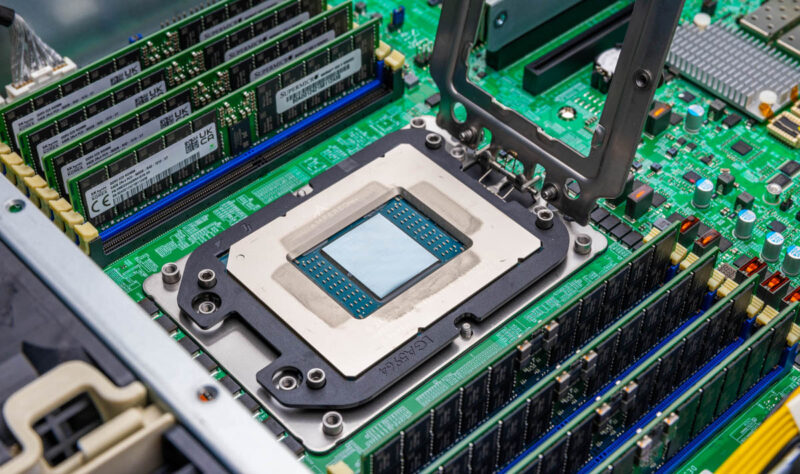
As for the socket, here is the LGA5964 pin array.
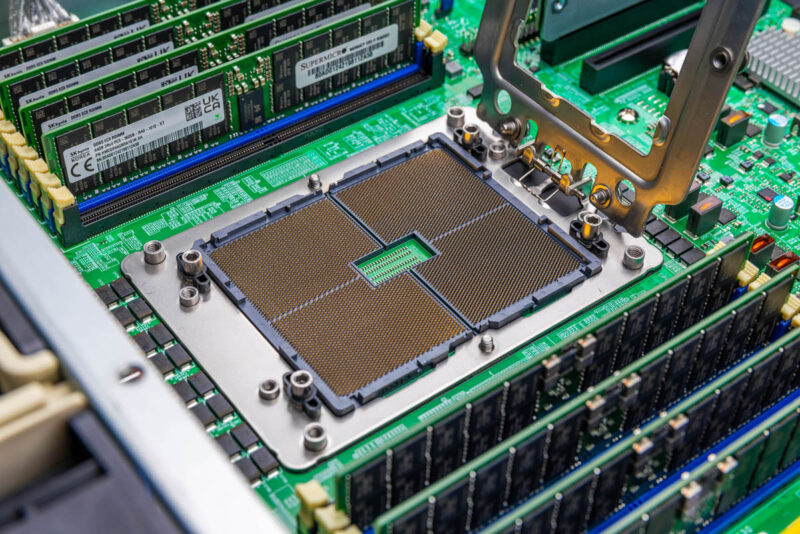
Here is one slightly closer. The gold color on the retention frame to the top right is actually the studio lights reflecting off of the pin array.
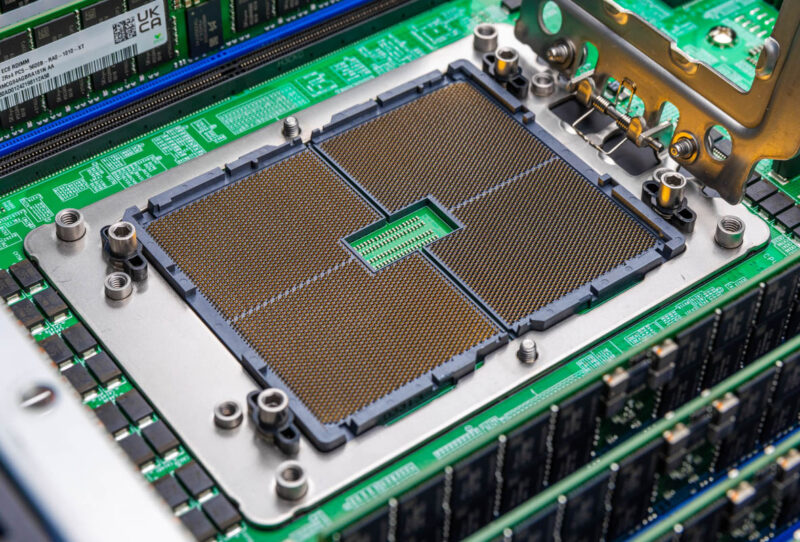
Of course, once photos were done, it was time to see if the system still worked, or if I was about to have an uncomfortable conversation with Ampere.
AmpereOne 192-Core CPU Running Ubuntu
Luckily, these days, unlike in 2016 when we first tried Cavium ThunderX Ubuntu installs without issue out of the box. It is amazing to see the difference between pre-Ubuntu 16.04 where Arm server CPUs were more than rough to run, to post-Ubuntu 16.04 where things would run, but you were still compiling a lot of basic tools, to today where just getting running, especially on cloud stacks such as with web servers, is effectively the same as on the x86 side.
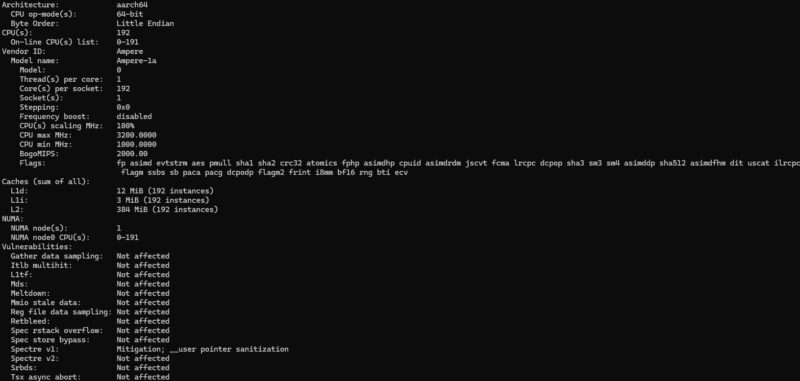
Since we pulled the heatsink for photos, we ran a 12-hour stress test to ensure we did not break anything.

A quick rust install (again easy) and we were off testing core-to-core latencies across a 192-core array.

The results were actually fairly good. We will have the color chart in our full review, but here is an idea of what we saw:

The system just finished stress testing a few minutes before this piece will go live. Today it is going into the main test rack setup and will start its benchmark runs so you might see a few pop up soon e.g. this fun one which was a bit higher than our NVIDIA GH200 result (not added to the public data set but was closer to 75K.) More to come in the full review, but ours will not be up before Hot Chips is complete.
Final Words
Overall, it was cool to go from seeing AmpereOne for the first time in-person last May, to getting to take apart a system and run it in the lab. We now have a very different landscape of what we might call “cloud native” processors than when we first used the original Ampere Altra in 2020. The rush to provide lower power per core, but more cores is real, and we now have AMD, Ampere/ Arm, and Intel versions.
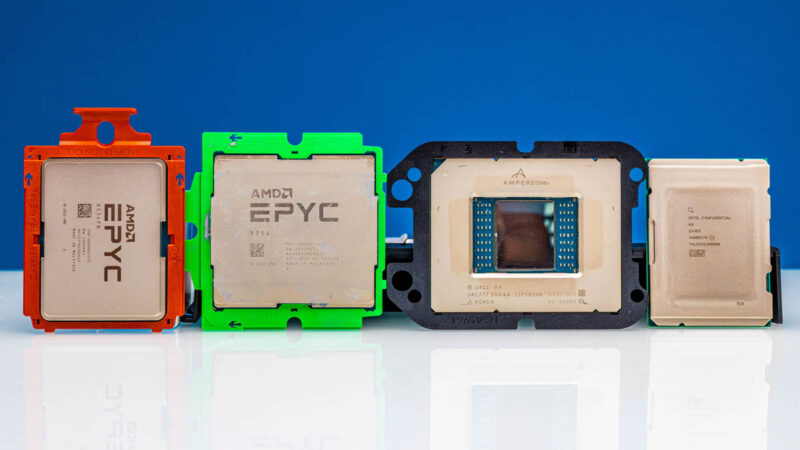
Hopefully, this was a fun and quick look at the AmpereOne A192-32X CPU, the LGA5964 socket, and how cooling works on these CPUs. Stay tuned for our full review.
Supplement on Substack
Since we often get requests when we take chip photographs, we have high-resolution images for the chip shots you see here (and more) available to our paid Substack subscribers.

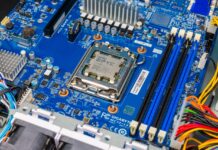


A lack of SVE is a bit disappointing. Even at VLEN=128 it would be really quite nice to work compared to NEON thanks. Amper Altra was Neoverse-N1, AmperOne is supposedly a custom core from scratch, so maybe they didn’t want to complicate things too much. (Also SVE can be memory bandwidth intensive, so with so many cores, and only 8 memory channels, it would not scale fully in many workloads, but still there are advantages to have it than note, so I hope next iteration will have SVE).
Other than that pretty interesting.
Direct die cooling and a multi-level (I assume) vapor chamber heatsink? That’s not going to be cheap to manufacture. An interesting design nonetheless.
Kyle wrote “Direct die cooling and a multi-level (I assume) vapor chamber heatsink? That’s not going to be cheap to manufacture.”
Could those heatsinks be more expensive than water cooling?
Somehow the exposed die reminds me of the Pentium III Coppermine and Athlon Thunderbird processors except bigger. My recollection is the Pentium and Athlon also did not support SVE and similarly were a little short on memory bandwidth.
“This is Ampere AmpereOne A192-32X a 192 Core Arm Server CPU” is difficult to parse, gramatically incorrect, and AI generated?
How about: “The Ampere AmpereOne A192-32X: a 192 Core Arm Server CPU”?
about 20$ per heatsink to manufacture